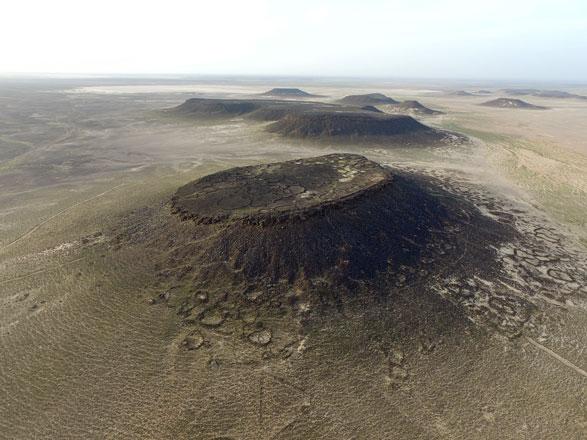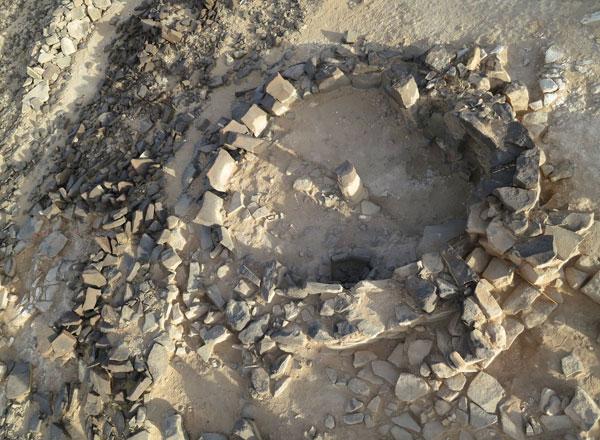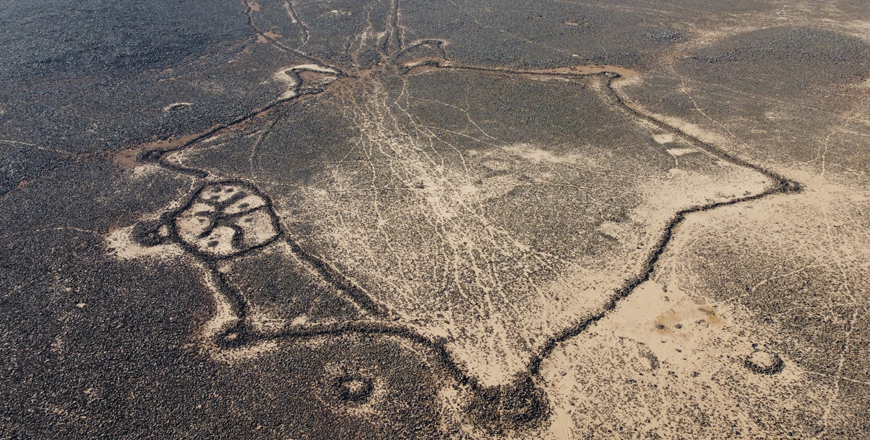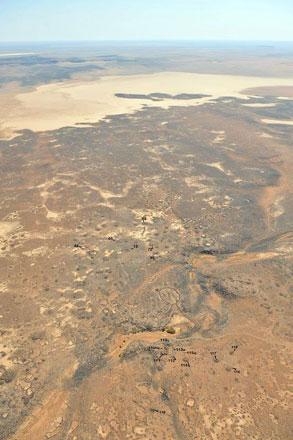You are here
In Jordan's spring desert bloom, hints of human history
By AP - May 05,2016 - Last updated at May 05,2016

In this April 23 photo taken by a drone, 8,000-year old stone structures stick out from the natural landscape of the black basalt desert of eastern Jordan (AP photo)
WADI AL QATTAFI, Eastern Badia — For a brief time, Jordan's eastern desert blooms. The dozens of mesas commanding the bleak horizons are now skirted with vegetation.
Through binoculars, these charcoal husks of dead volcanoes seem shrouded in green mist.
Birds sing above yellow, red and purple wildflowers peeking up around flint shards and stone carvings.
Many carvings are in the ancient Safaitic script, an ancestor of modern Arabic, but others are more recent: a drawing of a long-haul truck and "1999" scrawled in Arabic.
Summer's heat will soon burn the spring colors away, and return the plains to the basalt black, sandy brown sand and sky blue, says Yorke Rowan, an archaeologist who has spent the past seven years studying the dawn of human civilisation in Wadi Al Qattafi, Jordan.
He has learned that this desert was grassland with topsoil where long ago humans stalked herds of gazelle and built homes, corrals and hunting traps.
Semi-nomadic peoples built "Neolithic hamlets" used during seasonal hunting, shepherding and perhaps farming in the 6500 BC to 6000 BC era, Rowan said.
"There's a lot more going on in this desert region that looks like such a blasted, empty territory to our Western eyes, including archaeologists who should know better, that we're starting to discover," he said.
Sixty kilometres from the nearest city, Azraq, Rowan and colleagues in the Eastern Badia Archaeological Project have mapped thousands of these 8,000-year old stone structures, aided by a 21st century technology.
Rowan drives out across the plain to a launch site for a drone, built and operated by archaeologist Austin Hill. Rowan throws it into the sky and Hill pilots the drone and its cameras out over the mesas.
From the air, peculiar shapes form on the slopes of the black mesas: some circular, others kilometres-long.
The large number of structures hints at an environment much more like today's spring bloom. Human remains, stone knives, arrowheads and seeds discovered at the mesas or nearby at Wisad Pools also support the theory.
Current understanding of the Neolithic era is "undergoing its own revolution", Rowan said.
Archaeologists across the Middle East are re-examining the basic assumptions of humanity's roots. Did the spread of agriculture cause the era's population spike, or was it the other way around?
For now, there remains so much to do with trowel and drones, that Rowan and colleagues named the valley "the land of conjecture".
Related Articles
AMMAN — When a group of scholars in 2008 began to work together in the Black Desert (eastern Jordan), they found many piles of rocks that on
AMMAN — Desert kites were used for hunting of game animals during the Neolithic period as well as later periods and they were discovered not
AMMAN — “The question of why there are no gazelles represented in the petroglyphs [designs pecked into a stone surface] remains puzzling,” s



















